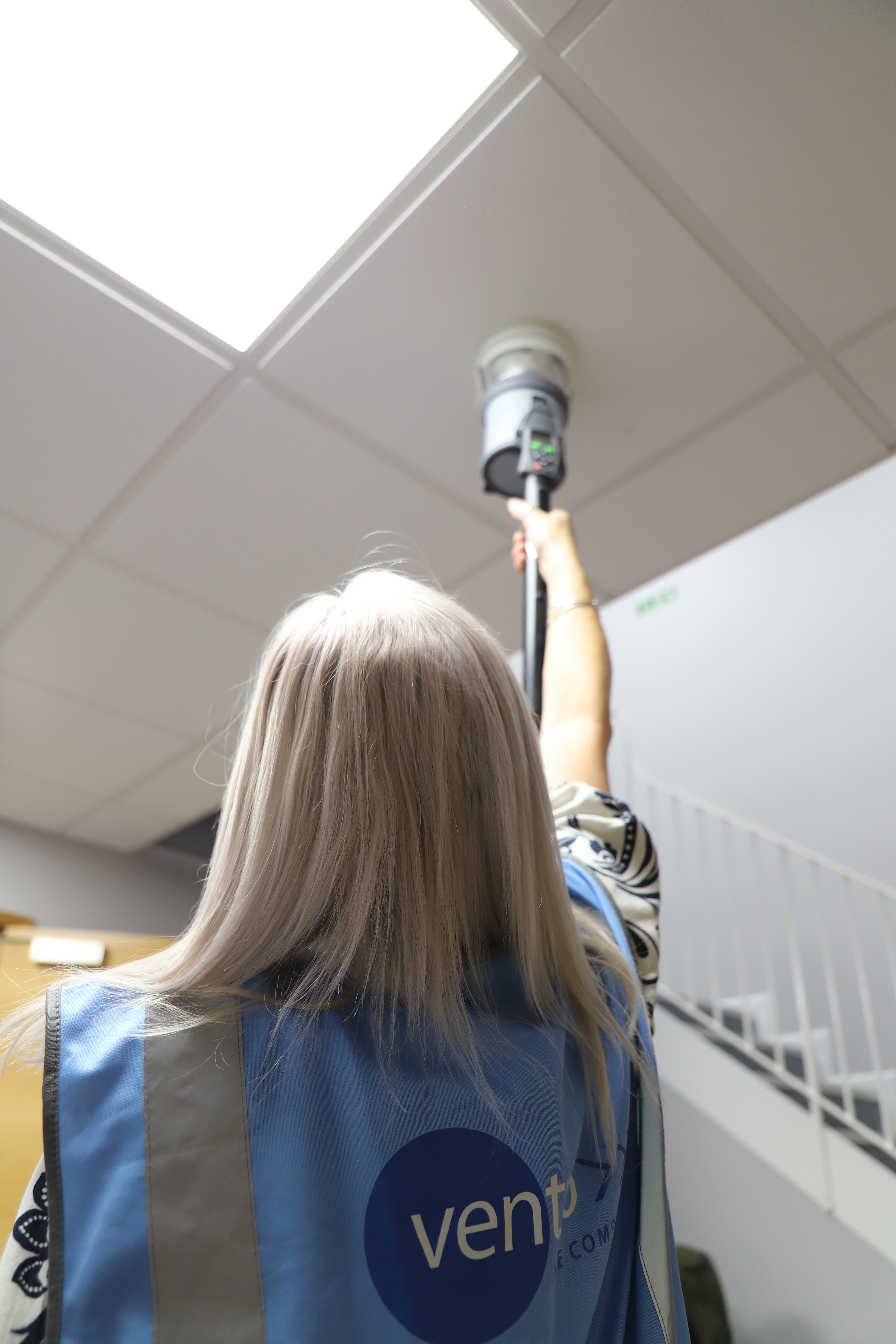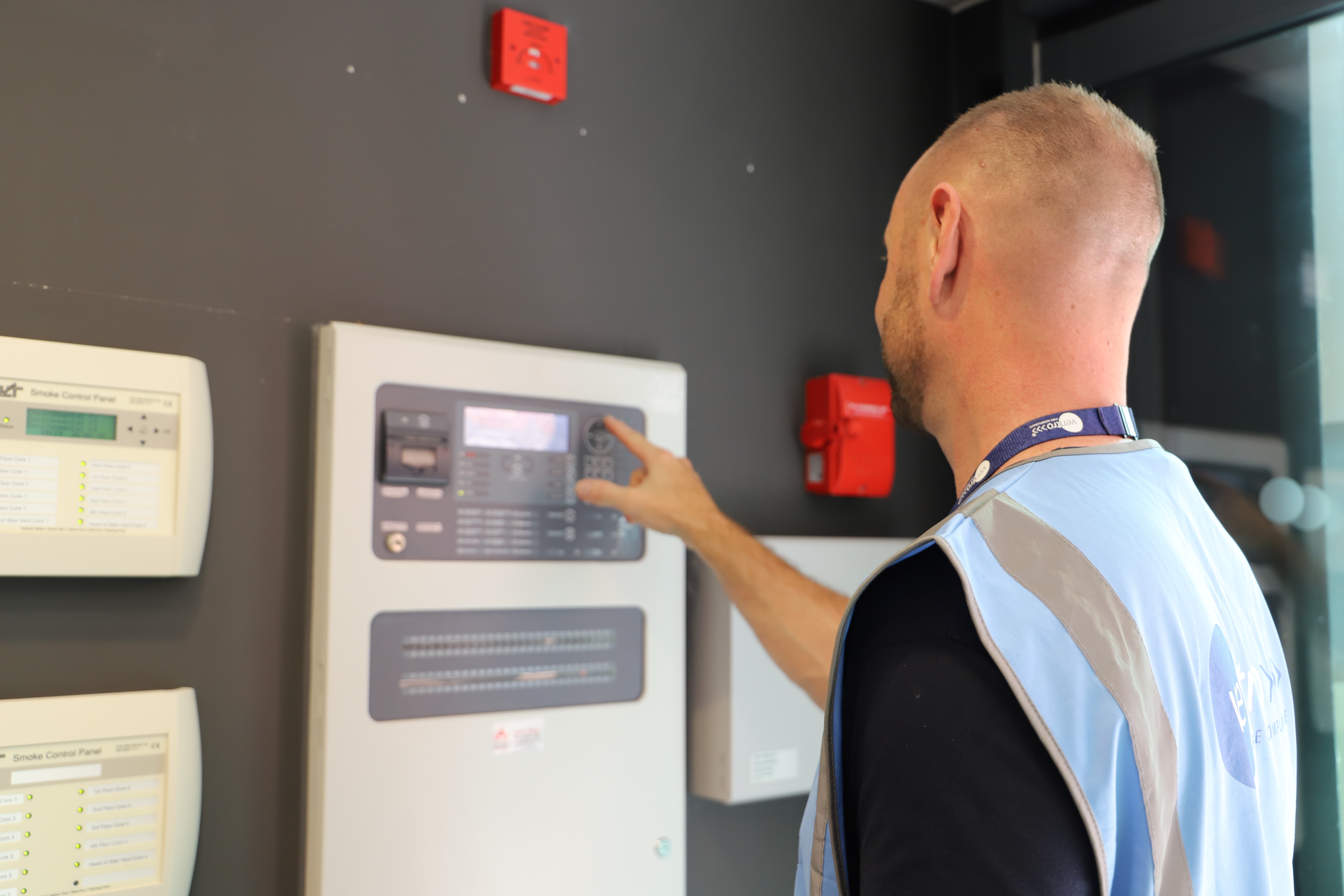During our "Fire Safety Checklist 2025" webinar, Howard Burrows, General Manager at Dorset Fire Protection (part of the Ventro Group), joined us for a focused Q&A session. With deep expertise in fire alarms, suppression systems, and compliance, Howard addressed key topics including legal obligations, fire risk assessment essentials, and how to maintain ongoing compliance. Drawing from his hands-on experience and leadership in active fire protection, he offered clear, practical answers to real-world questions from attendees.
.png?width=214&height=300&name=Key%20Speaker%20Image%20Template%20RECTANGLE%20(3).png) Howard Burrows
Howard Burrows
General Manager, Dorset Fire Protection
Howard has served as General Manager at Dorset Fire Protection since January 2024, playing a key role in daily operations and leading the company through its merger with the Ventro Group later that year. This move expanded the company’s ability to deliver comprehensive fire protection solutions across the UK. With in-depth expertise in fire alarms, suppression systems, and compliance, Howard is a strong advocate for regular system maintenance and staff training ensuring organisations remain both safe and compliant with evolving fire safety regulations.
Q1: As a landlord, do we need to carry out fire drills in a stay put high rise block, which has no audible warning/sounders?
Your fire action strategy will determine this, but usually in this scenario the safety systems are used to prepare the building for the fire brigade. As it is stay put, you will be instructed to leave by the fire brigade.
Q2: Do they still offer battery backup for Emergency Lighting or are they all on mains now?
All EMLs are battery backup with a 4year replacement program.

Q3: I thought EL had to be 3hrs unless the building is not going to be reoccupied until the system is recharged - possibly 24hrs. Is this not, correct?
This is based on 3 considerations where reoccupation is consideration 3. The other 2 are immediate evacuation and time it takes to evacuate. The risk of all 3 will then determine the duration.
Q4: I visited a newbuild low rise residential building recently and noticed they installed illuminated directional signage on-site throughout. When I queried why they chose this option instead of installing standard directional signage the contractor informed me that regulations now mandate all directional signage to be illuminated. I’m not aware of a regulatory change that mandates this, can you confirm?
All directional signage will be covered by the emergency lighting scheme if designed correctly to the British Standard.

Q5: Can the extinguisher be in the plastic floor stands which I've seen on sites?
Yes, absolutely, plastic floor stands are fine.
Q6: Any recommendations of how to dispose of fire extinguishers that are now obsolete?
Due to the environmental requirements to dispose of extinguishers, the simplest solution is for the maintenance company to take them away after a service.
Q7: Is it not the case that fire extinguishers are a requirement, so many per square metre and relevant to the associated risk. If your staff are expected to use them, is training required?
The requirement of extinguishers is determined by your FRA, but if they are required, then they will need to be sited in accordance with the British Standard.
Q8: So, is there no legal requirement to have portable fire extinguishers in premises? Article 4 of the FSO says 'take measures in relation to fighting fires...' Article 13 discusses firefighting 'where necessary'. BS5306 gives recommended numbers for extinguishers according to size of premises.
The requirement is determined by the FRA and then if required, installed and maintained in accordance with the British Standard.

Q9: A logbook may not be a legal requirement, but it is necessary in most circumstances to keep records of equipment (R38) and its maintenance, e.g. BS 5839 and BS 5266. Is this not in effect a logbook?
The simplest solution to document compliance is a logbook, but there are many organisations that use their internal documents to demonstrate compliance. Moving forward, the industry is moving to digital.
Q10: So, are you saying these daily and weekly inspections are for all buildings?
Yes, in general, but your FRA/fire action strategy/fire safety policy will take into account individual risk. A block of flats, for example, may only inspect the escape route when performing the weekly call point test. As long as it is documented and agreed.
Q11: As an ex-head of technical fire safety - it's against the law for a fire service to charge for a false alarm. I was on a project for call challenge. What they can do is challenge the call and not make an attendance unless there is confirmation of a fire.
We work very closely with local fire authorities and as an example, please check link: https://humbersidefire.gov.uk/your-safety/unwanted-fire-signals/call-out-charges
Q12: What is the opinion on networked fire alarms being separated into standalone systems in a multi tenanted building with 1 hour fire separating walls? Each tenant's FRA doesn't mention anything about the requirement to network or standalone.
Please get in contact with us and we can take a look at this for you.
Q13: Are we able to receive the digital Fire Safety Logbook?
We are reaching out to our customers as and when it becomes available. Please let us know if this would be of interest and we can add you to the request list.
Q14: With communal area staircases what are the requirements of using the correct paint when decorating - are fire retardant paints to be used to slow the spread of flames, or what fire protection would be necessary to ensure a level of protection?
Your FRA will determine the requirement for any special requirements. In general, communal staircases are considered low risk.
_____________
We’d like to extend our sincere thanks to each of our key speakers for their insights during the webinar.
Be sure to sign up for updates on our upcoming webinars here, and if you have any questions about the topics covered in this Q&A, feel free to reach out here and one of our specialists will get back to you.


.jpg)

.jpg)


